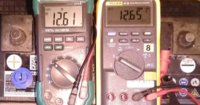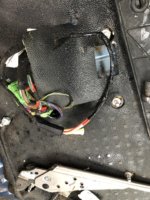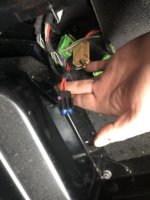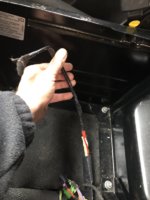Hi MMI . . . .
Agreed and no, but i have retested the battery with a separate meter, but a good call and ill do that test.
Agreed, thats what i thought and would expect . . . .
.
Agreed, again it all makes sense on paper..
.
Agreed again . .
Yep, totally . . . same here, we wanted to fully understand the setup before connecting any heavy loads. . . . .
so, just this morning i done another test . . . . . and as you can see the batteries are not balanced . . . why? - i have no idea?
this is the OEM main starter battery . . . . . .
View attachment 26403
this is the readout after a nights worth of resting . . . .
View attachment 26404
so,
SOC @ 78%,
12.46v
SOH @ 100%
this is the facoty AUX battery . . . . . . . .
View attachment 26405
and the readout . . . . .
View attachment 26406
so,
SOC @ 48%,
12.28v
SOH @ 92%
As you said above, i dont make sense, but it should do?
i have no idea why the batteries are so far out of balance, maybe because the AUX feed cables are thinner and longer? . . . . i just dont know.
but the testing does prove the point that for some reason the AUX battery is always under charged / ., . ., , ,. ,. ,. dont know why though.
No heres the realy interesting thing . . . .
this morning i refitted the REDARC and these are the readouts just now after a day out working . . . . .
this is the CTEK readouts . . . .
View attachment 26407
ignore the fact they are at 60% odd as I've been working on the van for a couple of hours with the LED lights etc running . . . . but look at how close the balance is now!!
and heres the volts readout from the BM2 of the AUX battery . . . .
View attachment 26408
again it shows a marked improvement and increase in charge and capacity . . . . . . . . . .
so tatally agreed with everything you said above, but the testing seems to show otherwise . . . . . . . .
plus may other members having issues with a less than fully charged AUX battery when using the OEM relay or a VSR setup . . . . . ??
and also i have personally witnessed the inrush of current (with a clamp meter) from the AUX battery back over to the starter battery with a clamp meter as
@Loz showed on his smart current meter when the starter battery is lower than the AUX battery....
The only conclusion i have is that that even though you would expect both batteries to be the same, the loads on the van demand current. . . . .
this should come from the alternator when the engines running, but because euro6 setup shuts off the smart alternator that current demand is sourced from both batteries via the relay.
The ECM monitors the SOC of the starter battery but is not accounting for the possible 50% off that currant draw from the AUX battery when the engine is running 50% Aux & 50% starter..
so im assuming that the EMC is not accounting for the 50% of supplied current back flowing from the AUX battery to supplement the starter battery when the smart alternator is not generating enough amps . . .
I think the ECM is just watching for the volt drop when high loads are switched on and only generates enough current to overcome the voltdrop raising the voltage to its preset level . . .
Now, i think the Aux battery is low on SOC because its not seeing its 15amps bulk/Absorption charge current for 2-3hours to bulk it up........its just seeing pulses of 15v under regen and because the ECM is seeing the NET average voltage of both batteries and assumes all is well.....
Now when you add the REDARC into the setup it has effectively a 1way diode to stop any back flow of currant from the Aux battery to the starter . . . . . . so now any availible currant is used to increase the SOC of the AUX battery.
it then uses the 3stage process to charge the Aux battery . . . .
so my conclusion is that the ECM is not factoring in the back flow of currant from the Aux battery, and just working from data from the starter currant shunt which effectively is only monitoring 50% of the available battery "bank" when the relay or VSR is engaged and connecting both batteries together . . . . . . . and dont forget the smart alternator is not shunted either . . . . .so the ECM is not metering out the current in amps generated from the alternator . . . . . only the voltage to overcome the volt drop. . . .
Thats my take on it all anyway and welcome new ideas or thoughts. . . . . . . .
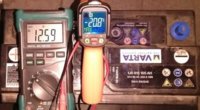
 .
.